Polaris has been using the same basic Hilliard front differential design in all their Rangers and RZRs since 2003. They’ve only made small changes here and there to make it stronger, make it more reliable, or make it fit new models.
Sounds like they’re using some old technology then, right? Maybe it’s time to update?
Here’s the thing: they nailed the design back in 2003. It’s pretty close to perfect. Can-Am has made strides to catch up, but they can’t compete with the simple elegance of Polaris’ front diff.
A UTV Differential Does MoreThe original purpose of the differential was to allow your left and right wheels to rotate at different speeds. Letting your outside wheel move faster than your inside wheel makes turning easier because your outside wheel travels a greater distance. If both wheels turned at the same speed, one tire would have to skid and lose traction, which is never good.
Modern front differentials have a lot more to worry about. They deliver power to the front wheels, make sure the wheels can roll at different rates, and lock those wheels together when needed. It’s no small task, and that’s why differentials today are complicated and so different from one another. Can-Am uses a design that is completely different from the Polaris front differential design, for example.
Polaris and Can-Am solve the same problems with their front differentials. The elegantly designed Polaris front differential, however, does precisely what you want, when you want it—without you having to give much input at all.
To understand what makes it special, we’ll have to break it down first.
The sprague, rollers, armature, and ring gear all spin together. When the magnet is energized, it puts drag on the armature. This wedges the sprague rollers into the peaks on the ring gear. The rollers push into the axle hubs and “grab” it.Let’s follow the power as it comes into the diff.
First, your spinning prop shaft turns the pinion gear of your diff. The pinion gear then turns the ring gear that is wrapped around the sprague. This is also what your front axles are connected to (more on the sprague in a bit).
When your four-wheel drive is not engaged, the power transfer ends there. You hit the gas, the ring gear spins, the sprague spins, and the armature plate spins—but it doesn’t apply power to your hubs to turn your axles.
When engaged, the rollers are wedged into the peaks. When disengaged, they spin freely in the valleys.When you flip that switch on your dash, all you’re doing is turning on an electromagnet in your diff. That magnet makes it harder for the armature plate to spin, which makes it harder for the sprague to spin.
The inner surface of the ring gear has many peaks and valleys. Normally the sprague and its rollers spin along with the ring gear in those valleys, but when the magnet is turned on, the sprague gets pulled into one of those peaks. The rollers are pushed into the hub and grab it through pressure and friction.
The rollers are pushed into the hub and grab it through pressure and friction.
With the rollers wedged, the ring gear then transfers power to the hubs, axles, and wheels, thus providing four-wheel drive.
The rollers want to pop out of the sprague. When they get wedged in a peak, they squeeze the axle hubs with enough force to drive the front wheels.So what? Getting four-wheel drive isn’t anything special, and Can-Am’s Visco-Lok does it just fine. The difference comes in how each of these differentials lock. Locking your differential is the key to success in sketchy situations or on insane terrain.
Most UTV manufacturers provide an on-demand locking mechanism. Flip a switch on your dash and the front diff locks, providing you with tons of extra traction. When you get through the rough spot, just flip it off and keep going. You don’t want it locked all the time because it makes cornering tough, you have less control, and it puts extra stress on your differential.
The other kind of front differential is the automatically locking differential. Polaris and Can-Am front diffs both fall into this category. These types of diffs lock automatically through a mechanical or electrical process. The trigger that causes these diffs to lock is slippage of a front wheel—these diffs are sometimes called limited slip differentials. But what sets Polaris apart from Can-Am is the way in which that slippage causes the lock to engage.
Can-Am’s Visco-Lok uses the slippage of a front axle to mechanically operate a pump. This pump adds pressure to a viscous fluid that compresses a clutch pack, which locks the differential via friction. This tends to be unreliable because the slipping front tire has to make one complete rotation or more before the diff locks.
Pictured is part of Can-Am’s Visco-Lok Differential. This differential uses the slippage of the front axle to mechanically operate a pump.Polaris’ diff is completely different. Remember, with 4WD engaged the ring gear uses the sprague and its rollers to turn both front axles.
Remember, with 4WD engaged the ring gear uses the sprague and its rollers to turn both front axles.
The front diff is geared lower than the transmission, which means the front axles have more torque and turn slower than the rear axles. If you’re driving on dry, flat ground with four-wheel drive engaged, the ring gear turns slower than the front axles, which are rolling the same speed as the rear axles. The rollers don’t get wedged and no power is transferred to the axles, which means no 4WD.
When you hit a tricky section and your back wheels start rotating faster than your front wheels, the ring gear wedges those rollers and your front wheels start rotating with power from the engine. You have four-wheel drive and your front diff is locked. The time it takes for it to engage and lock is almost instantaneous—the ring gear has to rotate only about 5 degrees.
Here‘s the really cool part. This engaging action can operate on each axle independently. So if you’re turning hard, your outside wheel will be moving fast and won’t engage, while your inside wheel will engage. If you’re off camber in some crazy rock garden, a front tire hanging over open air will force the diff to lock instantly.
If you’re off camber in some crazy rock garden, a front tire hanging over open air will force the diff to lock instantly.
Any time a front wheel gets caught or slows down at all, the diff is there to give it power. That means it always gives you power exactly when you need it and doesn’t give it when you don’t.
At its heart, the Polaris front differential is a simple mechanism. The parts work together in complex ways but if you need to replace something or service something, you don’t have to be a professional mechanic to figure it out.
Can-Am’s Solution: The Smart-LokCan-Am now has a competing differential on the market. It’s the Smart-Lok Differential. It solves a lot of the problems that the Visco-Lok has by using an electronically actuating diff locking mechanism. That’s nothing special on its own, but Smart-Lok uses a network of sensors on your machine to automatically lock and unlock the front differential.
It knows your steering angle, your speed, and your individual wheel speeds, along with your set ride preference.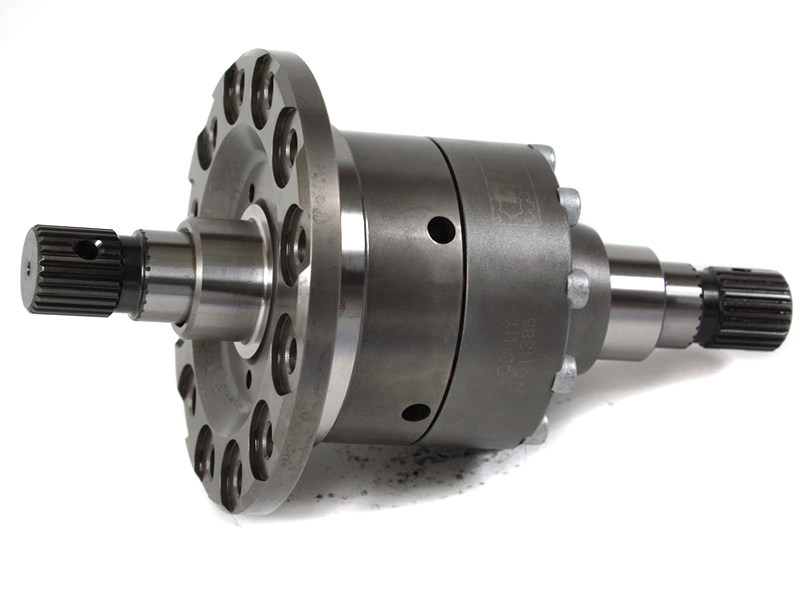 It then uses that information to lock and unlock the front diff on the fly. It’s cool, it’s innovative, and it works.
It then uses that information to lock and unlock the front diff on the fly. It’s cool, it’s innovative, and it works.
The main advantage that Smart-Lok has over Polaris’ diff is the same advantage that all on-demand locking diffs have over it: Polaris diffs don’t always do what you want them to on ice. If you’re sliding on a sheet of ice, your front diff will lock if you hit the gas at all, making it extremely difficult to gain control. Your best option is to turn off four-wheel drive entirely.
On-demand lockers like Smart-Lok let you keep your four-wheel drive without locking if you’re sliding on ice. That’s a much better setup to gain control in this instance.
Which Front Differential Is Right for You?Older Polaris machines tend to have some weaker parts in their diffs, which can lead to failure. Luckily there are lots of upgradable parts you can purchase for cheap (ahem) to get them up to snuff. These days, new Polaris diffs are pretty solid. The only real changes they’ve made over the years have been to make them stronger and more reliable.
These days, new Polaris diffs are pretty solid. The only real changes they’ve made over the years have been to make them stronger and more reliable.
The problem is that it’s a brute force answer to Polaris’ simpler front diff. That means that right now, you can only get them in Can-Am’s highest-end Maverick X3s. If you’re not willing to drop $30K for a UTV, you’re stuck with Visco-Lok.
All that for performance that is, at best, a small improvement over Polaris’ age-old design that comes with every machine—whether you get a used RZR for $4,000 or a brand-new Turbo S for $30,000.
So, does Polaris have the perfect diff? You be the judge.
What It Does
Once installed, drivers will notice an immediate difference, as the Quaife (ATB) limited slip differential automatically biases the torque across the axle to the wheel with the most grip. Unwanted wheelspin and slip are greatly reduced, resulting in less understeer on front or four wheel drive machines and reduced oversteer on rear wheel drive vehicles. Rear wheel drive cars with a Quaife limited slip differential become more controllable during oversteer moments, enabling drivers to exploit the full potential of their machines for the first time, leading to a more exciting, rewarding and rapid driving experience.
Rear wheel drive cars with a Quaife limited slip differential become more controllable during oversteer moments, enabling drivers to exploit the full potential of their machines for the first time, leading to a more exciting, rewarding and rapid driving experience.
On front wheel drive cars the Quaife ATB limited slip differential also delivers significant performance benefits during heavy braking. In this situation the Quaife differential’s inherent torque transfer characteristics work in reverse to transfer torque away from the locking wheel. This enhances deceleration, delaying the intrusion of electronic ABS systems and allowing drivers to brake later and deeper with the Quaife ATB limited slip differential than is possible with a standard ‘open’ differential unit.
Add these benefits together and it’s hardly surprising that in outright performance terms the Quaife ATB differential can make a remarkable difference compared to an ‘open’ differential. Back to back independent testing by Redline Magazine on a RenaultSport Clio 200 has proven that even on a short circuit lap times are reduced by over 2 seconds, making the Quaife ATB differential an excellent value for money upgrade.
Superior Quality, Safe Performance, No Wear, Lifetime Warranty
Fully compatible with manufacturer electronic traction control and anti-lock braking systems, the Quaife ATB differential offers a number of key advantages in both functionality and service life compared to conventional plate-style LSD units.
Silent in operation (even during low-speed parking manoeuvres) the Quaife ATB limited slip unit never ‘locks,’ making it progressive, safe and user friendly. Unlike plate-style LSD designs there are no clutches, ramps, springs or other wear prone components to replace at regular intervals, because the Quaife ATB’s well-proven system of helical gears is extremely durable, plus it’s designed to use standard transmission oils.
This makes the Quaife ATB limited slip differential a genuine ‘fit and forget’ upgrade that offers compromise-free performance and unbeatable reliability on the street, strip, stage or circuit, backed by a lifetime warranty.
Trusted By OEMs
The Quaife ATB Differential has been used by some of the world’s most revered motor manufacturers in their high performance model lines. Ford, General Motors (GM), BMW, Lotus and Chrysler are just some of those who have chosen our signature ‘traction enhancer’. Models have included all three generations of Ford Focus RS, the Lotus Evora 400, Mini JCW Challenge and Chevrolet Cobalt SS. The latest model to feature the ATB is Ford’s highly sought after 2018 Fiesta ST hot hatch.
British Made Through And Through
All of Quaife’s products are precision manufactured from certified steel billets and inspected to ISO9001-2008 standards. Our ATB Differentials are produced in the South East of England; at our Gillingham manufacturing hub in Kent. With advanced 3D CAD/CAM design suite software, robotic 3 – 4 and 5-axis CNC machining centres and tri-coordinate measuring machines operated by skilled personnel, Quaife redefines the boundaries of what’s possible in the field of mechanical precision engineering. As an ISO9001 registered company, quality control is a vital part of what we do. We have specialist Quality Inspectors trained to operate all of our temperature calibrated inspection machines. Rest assured, your ATB Differential comes with quality guaranteed, back up by our lifetime warranty.
As an ISO9001 registered company, quality control is a vital part of what we do. We have specialist Quality Inspectors trained to operate all of our temperature calibrated inspection machines. Rest assured, your ATB Differential comes with quality guaranteed, back up by our lifetime warranty.
Key Features

At the same time, at the beginning of winter, when there is little snow and it is still mostly soft, an ATV has advantages over a snowmobile. It more easily overcomes obstacles that are already invisible under the snow, but at the same time hard obstacles: earthen anthills in the fields, stumps, windblows, etc. , which is usually higher speed on a snowmobile, but also due to less suspension travel. nine0005
Critical snow depth for quad biking - half a wheel high. Usually for winter riding on an ATV, wheels of the maximum size, 28-30``, and a width of 11-12``, are installed. For better cross-country ability, the tires should have a minimum pressure, therefore, in order not to disassemble the wheel or not to turn the rubber on the disk under load (digging into the mud or under the ice), it is better to install the disks with a high hump and equip them with beadlocks. The rubber itself is better to choose softer, then it is not necessary to spike it: on all-wheel drive, good rubber is well controlled even on bare ice. nine0005
nine0005
Snow due to changes in temperature and humidity, the strength of surface winds and other weather factors can have very different properties. But one must always proceed from the fact that somewhere along the beams, forest lowlands and other secluded places in any weather and snow conditions, roughly speaking, “on the field”, they will be the worst for driving on wheeled vehicles. Thus, with a snow cover of more than 40 cm, it is better not to move out to virgin lands, and if you do this, then with special care. Moreover, driving on snow, the depth of which approaches the hub, is a breakthrough: slow, tedious, with an increased load on the transmission and with very high fuel consumption. At the same time, as a rule, the variator overheats in ATVs “out of the passenger compartment”, which is rarely tuned for smooth operation at low speeds. In preparation for the winter season, this must be done separately. nine0005
What other necessary or desirable improvements are needed to safely and comfortably operate an ATV in the winter? Heated handlebars and throttle grips are a must. Installing high-quality hand protection - it is not only necessary for driving through the forest, but also protects hands at speed from the oncoming flow of cold air that blows through any gloves. Seat heating is an ambiguous thing: on the one hand, it is undoubtedly warmer, on the other hand, the seat and clothes will be much wetter, because the blown snow dust will melt on the seat. I don’t install seat heaters, it’s better to invest in a quality suit. nine0005
Installing high-quality hand protection - it is not only necessary for driving through the forest, but also protects hands at speed from the oncoming flow of cold air that blows through any gloves. Seat heating is an ambiguous thing: on the one hand, it is undoubtedly warmer, on the other hand, the seat and clothes will be much wetter, because the blown snow dust will melt on the seat. I don’t install seat heaters, it’s better to invest in a quality suit. nine0005
Freezing is a big problem. I remember a case when we made our way through the virgin lands and at some point the ATV just stopped moving. The survey showed that 8 centimeters of snow-ice crust were frozen to the defense, which, due to friction and weight, became literally a dead anchor. Regular protection is usually made of aluminum, and this metal freezes over at twice the speed. Therefore, after that incident, we removed the standard protection, and instead installed a thick plastic one. nine0005
In addition to the fact that it practically does not freeze over and self-cleans, when hitting an obstacle under the snow, on the same frozen anthill - the curse of abandoned fields - such protection does not lose geometry, playing back after bending. The footboards can also freeze over, which is fraught with jumping off the legs at the most inopportune moment, and suspension parts. Especially the aluminum protection levers. In winter, ice forms very quickly in it, in which the CV boot boot works like in a tube. Then it all depends on the quality of the anther. If it tans in the cold, it will tear quickly, if it does not tan, it will slower, in any case, this does not add a resource to it. Therefore, it is better to completely remove such protection for the winter. nine0005
The footboards can also freeze over, which is fraught with jumping off the legs at the most inopportune moment, and suspension parts. Especially the aluminum protection levers. In winter, ice forms very quickly in it, in which the CV boot boot works like in a tube. Then it all depends on the quality of the anther. If it tans in the cold, it will tear quickly, if it does not tan, it will slower, in any case, this does not add a resource to it. Therefore, it is better to completely remove such protection for the winter. nine0005
In winter, at any exit from the knurled track, all-wheel drive and differential lock must be activated in advance. You can’t see where you can get stuck under the snow, and turning on the load lock on an ATV that is already firmly planted often leads to a breakdown. Do not think about blocking allows the installation of limited slip differentials. Torsen screw differentials showed themselves very well - they are available for many of the most common brands of ATVs: for Stels, Grizzly, BRP.
This differential blocks 80% of the load and avoids transmission damage when the wheel jams. The fact is that if, when digging into the mud under snow, when falling under a log or under ice, an obstacle is higher than the middle of the wheel, then when slipping, the wheel can literally fall into a trap, and the greater the torque on the axle, the more the wheel jams and harder to turn. The increasing load begins, as they say, to look for a weak spot, and this most often turns out to be an intermediate shaft or CV joint, which fall apart, and then a pleasant walk turns into an epic with evacuation. nine0005
It is in winter that such breakdowns due to the wheel getting "trapped" under the snow occur much more often than in the absence of snow. The Torsen differential, at critical force, transmits torque to the free wheel, thereby preserving the transmission. On my old ATV with such a front differential for 24 thousand km, including in winter, there was not a single transmission failure.
What else do you need for winter and what should you have with you? A mallet for breaking ice, a good wheel compressor, ether / gasoline, or at least a tube so that you can draw gasoline from the tank - this is for beading the wheel with an explosion if you can’t do it with a compressor. When driving off-road, disassembly of the wheel, even in the presence of beadlocks, is almost a regular situation. An ax is a must. An ATV weighs an average of half a ton, and it is not always possible to lift it just like that even with three or four people. And with a lever made of a log through an appropriate support, this can be done even alone, for example, if the car sat on the bottom in a frozen rut or pit. nine0005
Regular winches, which are usually equipped with an ATV in the cabin, are of little use for winter (and generally unsuitable for off-road operation). It is necessary to install good sealed winches - preferably two, forward and backward. A removable winch on squares on an ATV is inconvenient because when you get stuck, for example, in front, in order to get to the winch, you need to dig out a “cubic meter of soil”. It is very useful to have enough footage of additional synthetic rope for winches - cuts of 5, 10, 15, etc. meters. At the same time, it is categorically not recommended to use metal links for connection (shackles, carabiners, especially wrenches for locking knots) - either soft shackles or a loop into a loop. It is also better not to use metal cables. When they break (as with metal shackles, etc.), there is a high probability of not only breaking the body, glass or headlights of the ATV, but also getting a serious injury. nine0005
It is very useful to have enough footage of additional synthetic rope for winches - cuts of 5, 10, 15, etc. meters. At the same time, it is categorically not recommended to use metal links for connection (shackles, carabiners, especially wrenches for locking knots) - either soft shackles or a loop into a loop. It is also better not to use metal cables. When they break (as with metal shackles, etc.), there is a high probability of not only breaking the body, glass or headlights of the ATV, but also getting a serious injury. nine0005
In conclusion, I would like to remind you that, like any off-road equipment, an ATV poses an increased danger to the rider. In our country, people are very fond of relaxing - in nature, off-road and outside the area of traffic and traffic police. And most accidents happen in a state of alcoholic relaxation. The reaction falls, the head thinks worse - both in the victim and in those trying to help him. Therefore, I believe that the main rule for everyone - not just ATVs, snowmobilers alike - no libations in the process. Take care of yourself and your loved ones. nine0005
Take care of yourself and your loved ones. nine0005
All articles of the issue: Russian hunting journal, February 2022
nine45
The question is the following.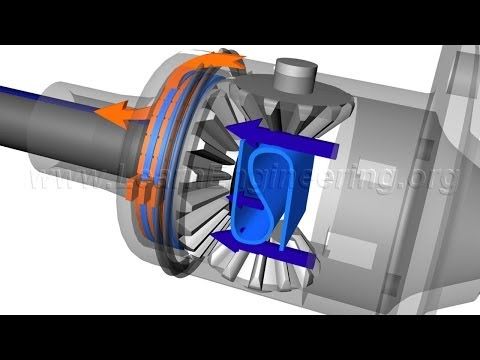 Why do some put interwheel locks in the front and rear axles? After all, if the rear differential is locked and the center lock is on, then the front wheels will rotate simultaneously with the rear ones. Or am I not understanding something? Bucks-bucks
Why do some put interwheel locks in the front and rear axles? After all, if the rear differential is locked and the center lock is on, then the front wheels will rotate simultaneously with the rear ones. Or am I not understanding something? Bucks-bucks
nine0052
Re: Question about locks
nrw wrote:
The question is the following. Why do some put interwheel locks in the front and rear axles? After all, if the rear differential is locked and the center lock is on, then the front wheels will rotate simultaneously with the rear ones.
Or am I not understanding something? Bucks-bucks
Click to open...
You understand something, but not completely, without offense.
Look, if it's simple, it looks like this:
The torque from the engine goes to the gearbox, then to the manual transmission and is distributed 50/50 to the rear and front axles, in the absence of an INTERAXIAL diff.
Further, in the rear axle, in the presence of 100% INTER-WHEEL blocking, the moment is distributed 50/50 to both axle shafts. If there is no blockage, then the entire moment goes to the slipping wheel. Same with the front axle. nine0103 When slipping, the cars behave like this:
1. With an INTER-AXLE LOCK, digs one rear and one front wheel.
2. In the presence of INTER-AXLE LOCK and REAR DIFF LOCK, digs two rear and one front wheel.
3. In the presence of INTER-AXLE LOCK, REAR DIFF LOCK and FRONT DIFF, digs two rear and two front wheels.
Ideally, if you put a car with all the locks on the asphalt and lift up three wheels, then it will go Jeeping! nine0005
Reactions:
Vovan4ik and Sergey Markov
Re: Question about locks
Oh! And I ask, is it possible? If on Vitara and Dzhimka the front axle is without a differential, then it’s enough just to add a rear axle differential lock and it will dig with all four wheels?
nine0004
Re: Question about locks
in Bridges there is a differential!!! - how without them???? both in the front and in the rear
I have added a rear lock on the red Escuda and digs 3 wheels!!!
Re: Question on locks
Something I doubted, of course, but I still knew that Vitara, Dzhimka, and Opel Frontera in the front axle do not have a differential, so it is forbidden to use it on non-slip surfaces .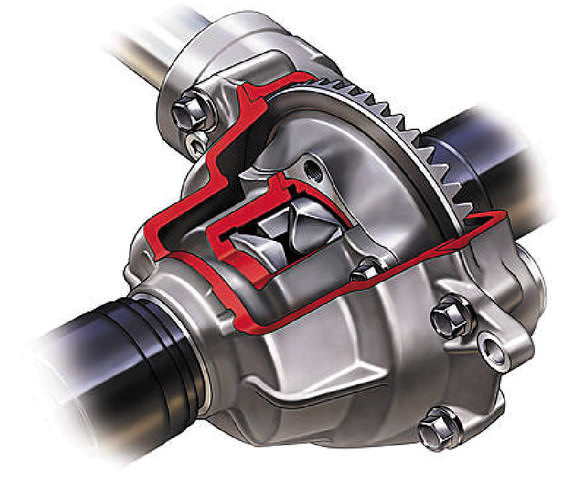
Re: Question on locks
Cross-axle differentials standing on all machines. Regardless of whether the suspension is dependent or independent. If the bridge is blocked on a straight line, especially the front one, then the radius will increase by about half on off-road, and on asphalt, the rubber starts to whistle and draw on it. And besides this, it can lead to a break in the axle shafts (CV joints). You just need to know what is in the bridge and there may be a simple differential, a self-locking differential and a limited slip clutch (which is not a differential but performs its function. When slipping, the clutch partially transmits torque to the second wheel giving the appearance of blocking). Couplings are almost always in the front axle and it is not recommended to constantly ride them. nine0005
When slipping, the clutch partially transmits torque to the second wheel giving the appearance of blocking). Couplings are almost always in the front axle and it is not recommended to constantly ride them. nine0005
Re: Question on locks
A simple example, today I changed tires to summer tires - road, rain Dunlop 9000 Sport (if anyone knows, he will understand), well, I decided to test:
I drove out onto the bare ice, since I have such a place.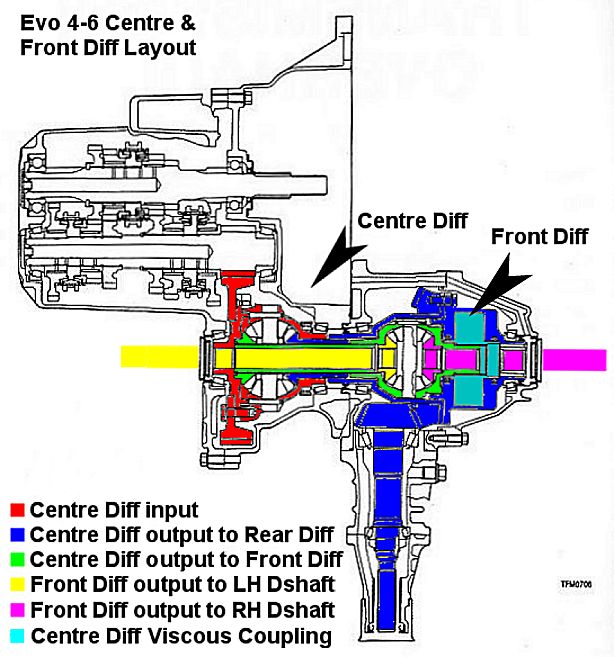
I have an LSD in the rear axle - the limited slip diff, as I wrote, transfers the moment to the standing wheel up to 60%, I start to slip: one rear wheel is slipping, but nevertheless the car moves forward quite acceptable, the second rear wheel seems to be standing still, but moved. nine0103 I turn on the front axle: one front and one rear axle are slipping with might and main, and the second rear one barely slipped, the second front one just rolls.
I added zest - I put the right side on the ice, and the left side on dry asphalt: the same effect, only the car seemed to move faster. On the lower it is the same as on the full drive.
It seems that everything is clear and clearly demonstrated to himself.
Re: Question about locks
wagon wrote:
I doubted something, of course, but I still knew that Vitara, Dzhimka, and, in addition, Opel Frontera do not have a differential in the front axle, so it is forbidden to use it on non-slip surfaces.

Click to expand...
Escudo and Jim have no differential. But only not interwheel (everyone has it), but interaxle.
No center differential on machine A = 100% locked center differential on machine B. nine0005
Reactions: 1 person
Re: Question on locks
I wonder why the manufacturers could not make it so that when the center differential was locked (or like Jim just when the front axle was connected), all the wheels were immediately blocked through the center differential? And not like now crosswise. Or will it be too much of a burden?
Or will it be too much of a burden?
Re: Question about locks
Everything is already written. Because cross-wheel differentials are everywhere. And in order to organize a rigid connection between the wheels of one axle, you need to block the corresponding inter-wheel differential, using "cunning" mechanisms that increase the cost of the assembly, and which can only be used on terrible off-road. Do many people need it? Plus, the complication of the design brings with it a decrease in the guaranteed life of the mechanism.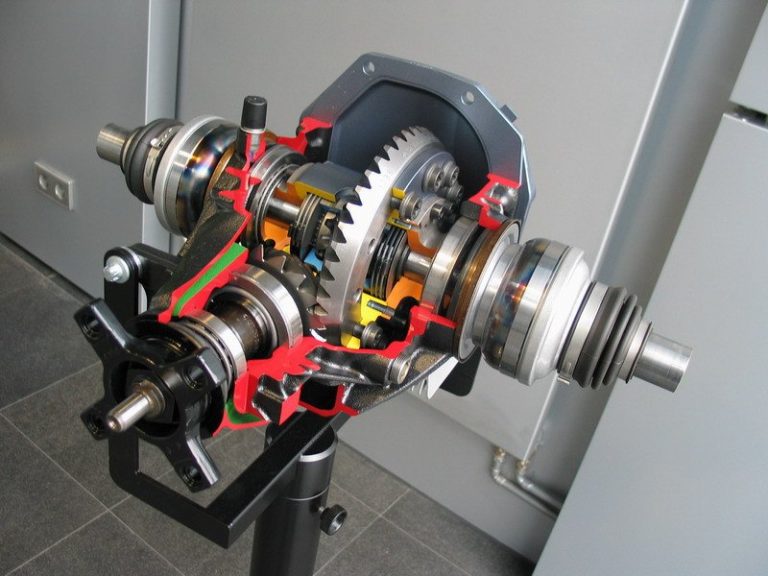 That's why they are so rare. nine0005
That's why they are so rare. nine0005
Pro criss-cross:
Read Allzah's post about the twist, just keep in mind that he has LSD in the rear axle. Wheels on one side can also slip at the same time.
Re: Question about locks
Allzah , you are just super. He wrote everything about diffs very intelligibly. Well done.
It breaks me to write for a long time. Especially today...
Axle locks
Alexey 89 wrote:
I guys also want all the body kits, if anything I'm always ready to enter the order group
I would give a car for testing, but far from you.
Although I will somehow send him to Moscow to install the ARB locks.
Click to expand...
Why don't you want a self-block? It is the same, only 7 times cheaper. The guys on the trial saw it working for me. These pieces are also for the front axle. Although, if the money is all right
By the way, I would put it myself, and you don't have to drive to Moscow.
Re: Bumper from Lebedushki
>> Why don't you want a self-block? It is the same, only 7 times cheaper. The guys on the trial saw it working for me.
The guys on the trial saw it working for me.
completely forgot to ask you about him and see how he behaves on the pavement, it’s a pity that you won’t be at the meeting on the 25th
nine0004
Re: Bumper from Swan
Sprinter
Samoblok, this is a dangerous thing for winter. It's self-unblocking, think about how two driving wheels will carry you in the ice from behind in a turn...
Re: Bumper from Swan
Alexey 89 wrote:
Although I will somehow send him to Moscow to install the ARB locks.
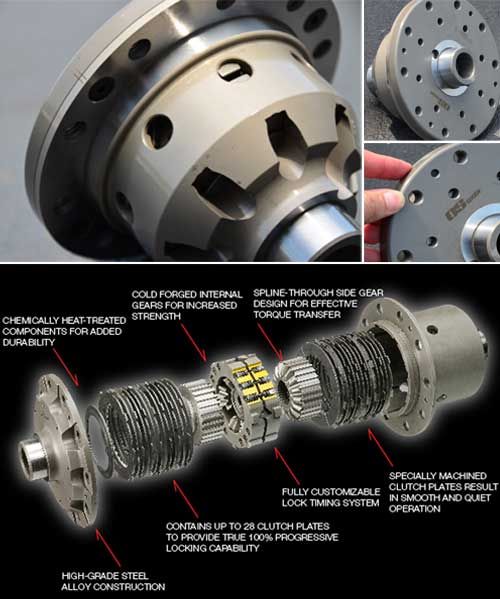
Click to expand...
From this place in more detail ;-) What, what, how, where they put and how much?
Re: Bumper from Swan
spider wrote:
From this place in more detail ;-) What, what, how, where are they placed and how much do they cost?
Click to expand...
Installation is not clear, but as I understand it - both blockers under $2000 are obtained
link
Re: Bumper from Swan
Rockfire wrote:
Installation is not clear, but as I understand it - both blockers under $2000 are obtained
Click to expand.
..
Senk, a separate respect for the speed ;-) The question is, what about the center axle?
Re: Bumper from Swan
spider wrote:
nine0004 Question, and interaxle?Click to expand...
Are you joking like that? ))
Re: Bumper from Swan
Rockfire wrote:
Are you kidding? ))
Click to expand.
..
I put it so unsuccessfully, a stray that allows the front and rear axles to spin at different speeds when the front end is constantly on, for example, when cornering
Re: Bumper from Swan
spider wrote:
I put it so poorly, a stray that allows the front and rear axles to spin at different speeds with the front end constantly turned on, for example, when cornering
Click to expand.
..
There is no center differential in Jimny and there is no point in trying to build it in)
nine0004
Re: Bumper from Swan
Alexey 89 wrote:
Sprinter
Self block, this is a dangerous thing for winter. It's self-unlocking, think about how two driving wheels will carry you into the ice from behind in a turn .
..
Click to expand...
Do you wind up on ice at the RFP? I fell like a snowball - immediately on the PP. Ask Andrey (Cadet), he has been operating Lockrite all year round for 2 years. Sysadmin Boris Ekner from Sweden http://www.jimny.se has been using it for 2 years. Do you think Sweden is warmer? Not much. By the way, yesterday I tried a samoblok on ice with an RFP - for some reason, stability appears, the car levels out faster, maybe subjectively? nine0005
Re: Bumper from Swan
spider wrote:
From this place in more detail ;-) What, what, how, where are they placed and how much do they cost?
Click to expand.
..
Call the Land Rover Center on Ilmensky Proyezd and you will be unpleasantly surprised Bucks-bucks ARB - this is for SergBrother, his budgets. And for managers who work under, not over, there is EZ-Locker! nine0005
Re: Bumper from Swan
Rockfire wrote:
Jimny has no center differential
Push to open...
And who argues, it's understandable, we go further
and there is no point in trying to embed it)
Click to expand.
..
Do not take it for work, explain in more detail, maybe I really stepped on a rake ;-)
nine0004
Re: Bumper from Swan
Sprinter wrote:
Call the Land Rover Center on Ilmensky Proyezd and you will be unpleasantly surprised Bucks-bucks ARB - this is for SergBrother, his budgets. And for managers who work under, not over, there is EZ-Locker!
Click to expand.
..
Something I'm dumb today ;-) I didn't understand anything, translate, plz
nine0004
Re: Bumper from Swan
spider wrote:
And who argues, this is understandable, we go further
Do not take it for work, explain in more detail, maybe I really stepped on a rake ;-)
Click to expand...
why install ARB locks - to feel confident in serious dirt.
In normal all-wheel drive mode, we have (if we sit down seriously) - 1 front wheel and 1 rear wheel slipping (there is no center wheel in the trailer). nine0103 We turn on the rear axle lock - both rear wheels and one front wheel slip.
we also turn on the blocking of the front diff - Hurray! all 4 wheels slip.
on parquet floors with the presence of an interaxle diff in the mud, only 1 wheel out of 4 slips.
Re: Bumper from Swan
Rockfire wrote:
why embed ARB locks - to feel confident in serious dirt.
nine0005
In normal all-wheel drive mode, we have (if we seriously sit down) - 1 front wheel slip and 1 rear wheel (there is no center wheel in the trailer).
We turn on the rear axle lock - both rear wheels and one front wheel slip.
we also turn on the blocking of the front diff - Hurray! all 4 wheels slip.on parquet floors with the presence of an interaxle diff in the mud, only 1 wheel out of 4 slips.
Click to expand...
It looks like I'm not the only one who's dumb today ;-) So, it's clear with this, it's not about dirt anymore
spider wrote:
a stray that allows the front and rear axles to rotate at different speeds when the front end is constantly on, for example, when cornering
Click to expand...
Hard surface on CONSTANTLY front-wheel drive, turn, if there is a center differential, the wheels on it will spin at different speeds.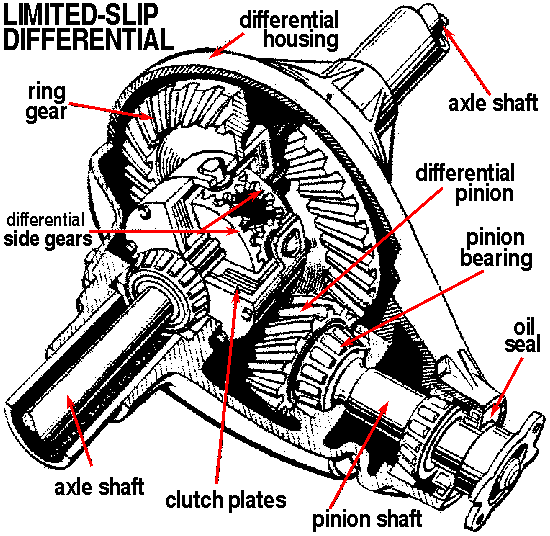
As you correctly noted:
Rockfire wrote:
Jimny has no center differential
Click to open...
The question is, is it worth planting a vegetable garden, and if not, why???
Re: Bumper from Swan
spider wrote:
It looks like I'm not the only one stupid today ;-) So this is clear, it's not about dirt anymore
Hard surface is PERMANENTLY front-wheel drive, turn, if there is a center differential, the wheels on it will spin at different speeds.
nine0103 As you rightly remarked:
The question is, is it worth building a garden, and if not, why???
Click to expand...
Because rear-wheel drive is sufficient on hard surfaces.
Why is it needed full and still open?
Moreover, this garden is likely to be impossible purely technically.
Re: Bumper from Swan
nine0004 Rockfire wrote:Because rear-wheel drive is sufficient on hard surfaces.
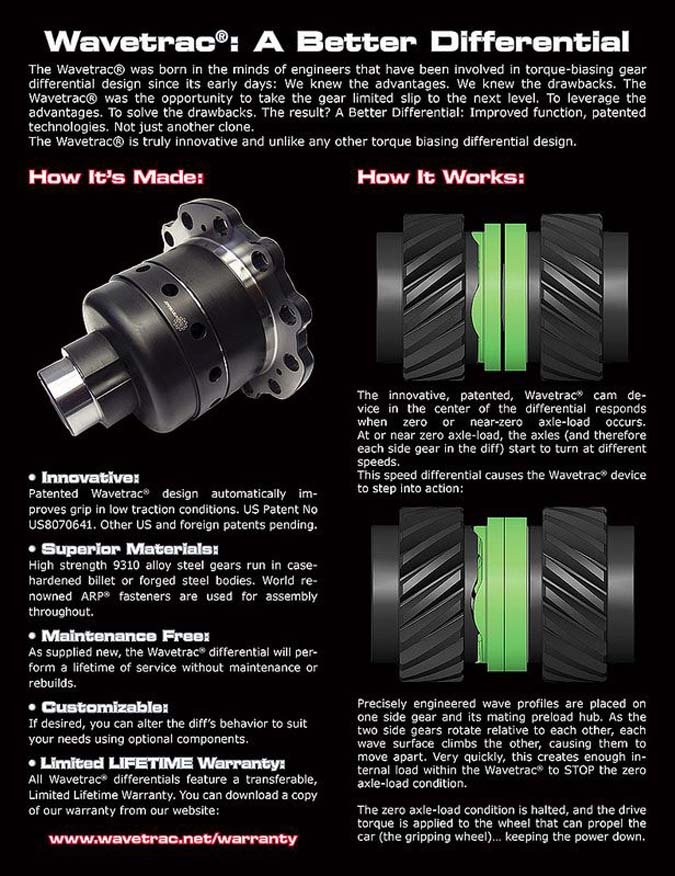
Why is it needed full and still open?Click to expand...
I'm sorry for being tedious, just a moment of patience and we'll be done with it ;-)
Well, the first thing that comes to mind is icy asphalt, then so, then so, we don’t turn off the front end, but we unlock the differential
Moreover, this garden is likely to be impossible purely technically. nine0005
Click to open...
Lockable center differential not possible?
Re: Bumper from Swan
spider wrote:
Lockable center differential not possible?
Click to expand.
..
You can buy another car. Outlander for example)
And on icy pavement ride a Jimny all-wheel drive.
My question is this - why build an SUV out of almost a jeep? nine0005
P.S. Well, if there is no center differential - it is not possible to install it with a 99 percent probability and with the same probability. it is not necessary
Re: Bumper from Swan
spider wrote:
Sorry for the tediousness, just a moment of patience and we'll be done with it ;-)
Well, the first thing that comes to mind is icy asphalt, then so, then so, we don’t turn off the front end, but we unlock the differential
Lockable center diff not possible?Click to expand.
